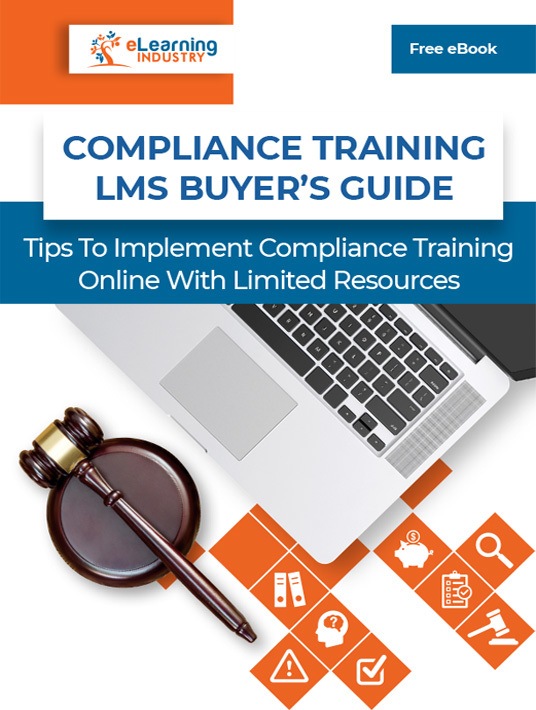Corporate Compliance Training For External Partners: Essential Support Tools You Should Consider
Micro-management is increasingly being identified as a harmful way of leading corporate teams. It’s also becoming increasingly impractical in this age of remote working. You might call it the gig economy or consultancy, depending on the image and budget. Aside from telecommuters, external partners might be contractors or sales teams based in the field. Their physical absence from your main business premises means their training requirements differ. What are some corporate compliance training support tools that can ensure their experience is just as efficient as their office-based counterparts?

1. JIT Tutorials
The advantage of having someone next to you at work isn’t always obvious. In fact, it can sometimes feel like a distraction. You may feel crowded or monitored. Like they are constantly looking over your shoulder or judging your decisions. But when you get stuck performing a task, you can tap their shoulder or lean over and ask for help. External partners can’t always do that. They can send a text message or make a phone call, but their request may not be seen or heard immediately. They might be in a meeting. Maybe their phone is charging. If the employee training participant has access to their training software, especially on mobile, they can quickly pull-up a JIT tutorial. They’re designed to be direct, to the point, in everyday language. Often, they follow a step-by-step format that employee training participants can consume and understand in seconds. These tutorials are frequently task-based, so they can resolve work-place emergencies instantly using the compliance training LMS. This helps keep your staff compliant, no matter where their work-station is located.
2. Video Demos
In the above example, the emergency helper could be guided audio to walk you through the scenario. Or it might be an infographic or a bulleted listicle. All these formats are designed for quick reading and extended knowledge retention. But there are situations where a more visual approach is needed, especially for technical and/or manual activities. They may have to ‘see’ demonstrations of (non) compliance in order to fully understand them.
For example, say an employee training participant needs help changing the code on a security system. Or assembling a product for a client. Or identifying the right spares/accessories for work equipment. In such circumstances, a video demo with a helpful voice over, plus closed captions, is ideal. The video should be clear enough to zoom in but compressed to allow easy loading on mobile devices. It should also offer further, clearer explanations of the fine print in compliance regulations.
3. Simulations
For employees within the office space, simulations can use 360° renderings of the office as a backdrop. This isn’t quite as effective on external partners. They don’t work in the main office daily, if at all, so they don’t have the same connection to it. Instead, it’s best to have simulations that mimic their physical workstations. Task-based simulations are more useful. For example, a sales team member or distribution officer could practice simulation exercises with a GPS system. It’s certainly safer than letting them get literally lost using their new office car. And since their job might involve making deliveries and closing sales in remote places, dialogue simulations are helpful. Employee training participants learn to start conversations, earn the trust of strangers, and convert casual interaction into solid sales.
4. Company Policy Serious Games
The best kinds of policies are the ones you see in action. And when you’re physically within the office space, there’s a bigger likelihood of this happening. External partners can read all the missions and visions. But they may not experience these policies in the context of mundane office existence. Serious games can help external partners connect the theory with the practical. While they’re not quite simulations, they can include contextual examples. They demonstrate company policies as exhibited in real-world situations. Employee training participants can get a clearer image of the corporate ‘big picture’ and where they fit into it. And you can employ reward systems, badges, and leader boards to keep them motivated. It spices up these seemingly dry policy statements.
5. Recorded Live Events
You probably host live events for your in-house staff members and remote workforce. But external partners can also benefit from these real-time sessions. They might not be able to attend the live session due to busy schedules and time differences. However, you can record and upload them to your compliance training software for future viewing. Or even repurpose them to create a series of bite-size support resources. Such as 5-minute video clips that explore different aspects of sexual harassment policies. You can even pair the recorded event with follow-up resources. Like simulations and scenarios that allow them to apply what they learn and build real-world experience. This also helps you gauge their level of understanding and detect areas for improvement before it’s too late.
Corporate compliance training is a great tool for profit, boosting revenues while trimming expenses. But your external team needs specialized training to help them keep up with on-site staff. What particular features will they find helpful? JIT tutorials for those moments when they need emergency assistance and there’s no-one nearby to offer it. Video demos and simulations to help them observe, imitate, and practice key office tasks. Turn dull regulatory theory into serious games that teach office policy in a practical, meaningful, and memorable way. Finally, upload those recorded webinars and live meet-and-greets so that every member of the team has a chance to improve performance.
Have you ever wondered what compliance training is and how you can implement a compliance training LMS in your workplace without going over your budget? Download our eBook Compliance Training LMS Buyer's Guide: Tips To Implement Compliance Training Online With Limited Resources and discover how to cut costs, mitigate risks, train your employees, monitor their performance, and maintain your company’s high standards.

